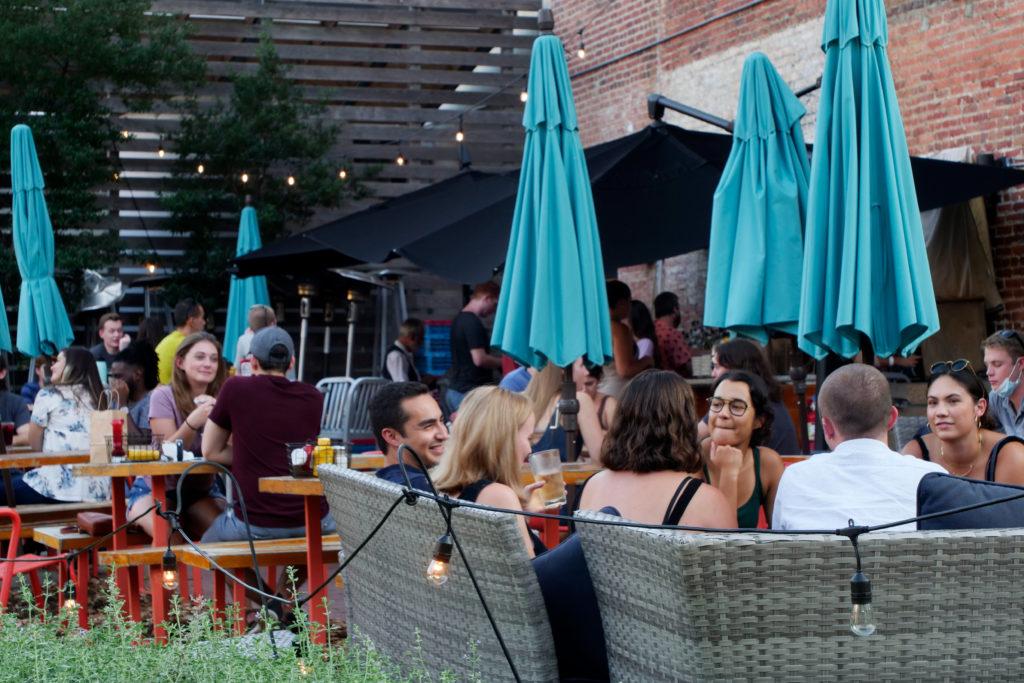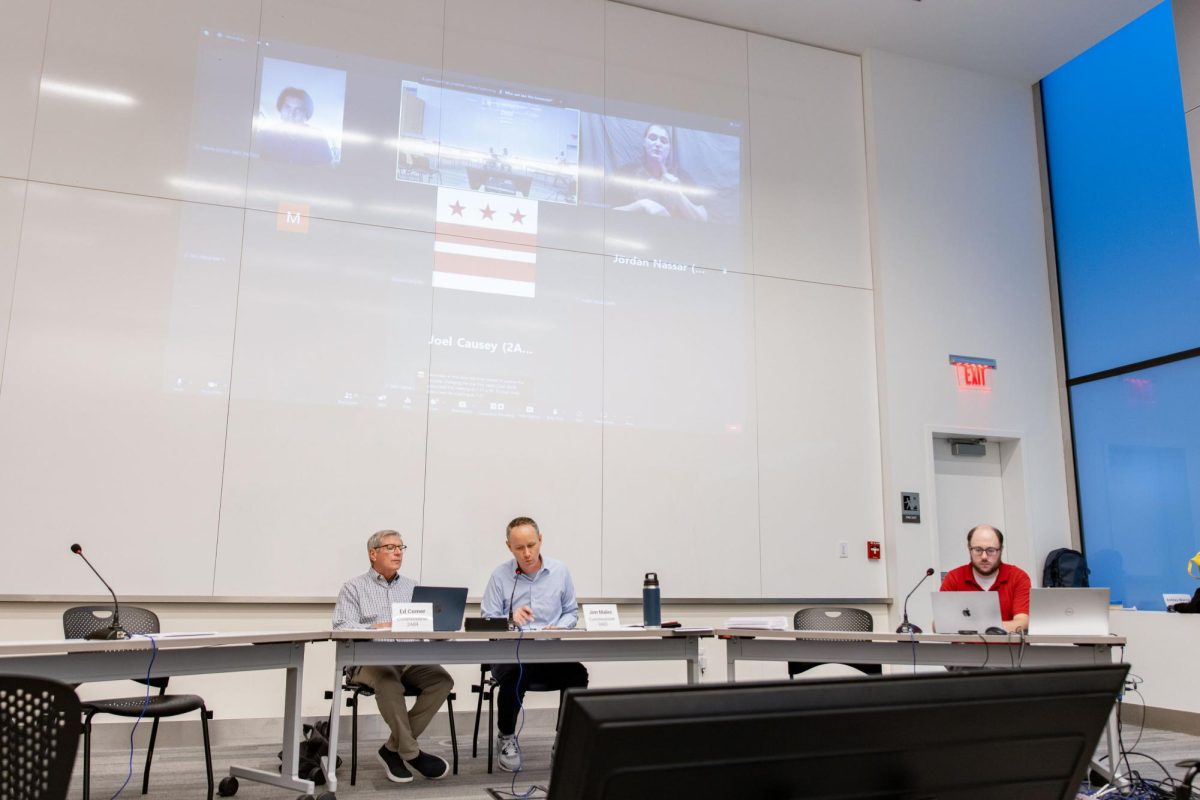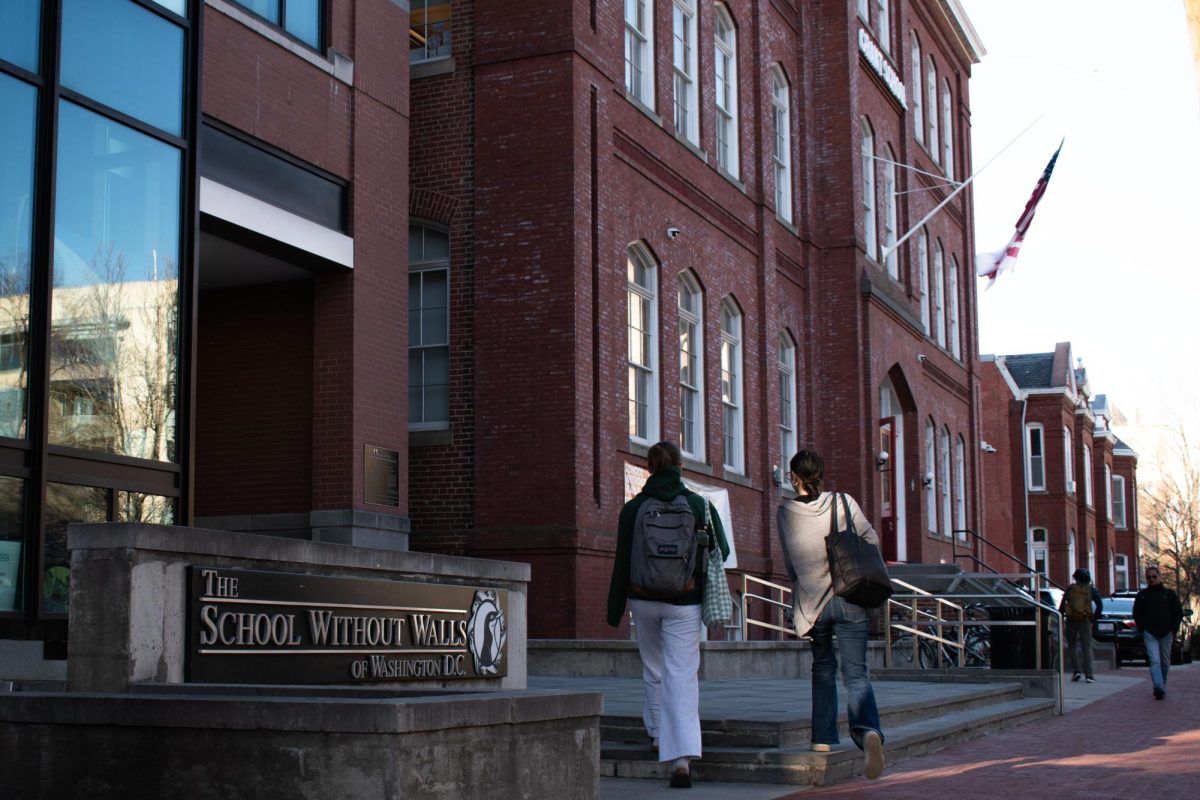Selling burgers and serving students used to be the norm at Thunder Burger & Bar, but after the COVID-19 pandemic turned customers away, business as usual was nearly forgotten.
Niko Smith, the manager of Thunder Burger & Bar, a GWorld vendor in Georgetown, said about 10 percent of the restaurant’s business was made up of students before the pandemic, but the restaurant didn’t swipe a GWorld card for more than a year once students left. As students resettle into the District for the first time in more than a year, Smith said customers have started to trickle in – a pre-pandemic pattern that could take some more time to sink in.
“I rang my first GWorld about a month or two ago, and I almost forgot how to do it,” he said.
Thunder Burger & Bar is one of dozens of GWorld vendors that are welcoming the return of students to D.C. after more than a year of financial instability caused by an empty campus. Managers of local stores and restaurants said they went months without scanning a GWorld card, which often made up as much as half of their pre-pandemic sales.
The vendors said they still haven’t returned to pre-pandemic sale levels because several other nearby employers like the U.S. State Department and the International Monetary Fund are mostly still working remotely, but the influx of students has been vital for their initial recovery from the pandemic. Smith said GW move-in days over the last two weeks were some of the restaurant’s busiest days since the pandemic started.
“We do rely heavily on GWorld payments, and we did not see a single GWorld order come in for over a year, so that was definitely a significant hit for us,” he said.
Mike Arthur, the manager of Wingo’s, a GWorld vendor that sells chicken wings near Georgetown, said students made up about 40 percent of the restaurant’s delivery orders and 20 percent of dine-in orders before the pandemic, but those figures nearly dropped to zero after students left campus last March.
Business faltered for GWorld vendors during the pandemic with closures and widespread layoffs after students were forced off campus. Arthur said the loss of students from American and Georgetown universities and GW might have been the main cause for the local closures, and he is thrilled students are returning.
“The students are great, they support you,” he said. “I have a smile ear-to-ear because GW is reopening.”
Jeremy Pollok, the manager of Tonic, said the return of students is helping to fill the gap that has been left by the additional absence of customers from the IMF, the World Bank and the State Department. He said Tonic still wants workers from those agencies to return to regain customers and get back to pre-coronavirus revenue levels, but the arrival of students to Foggy Bottom is “awesome.”
“We’re not quite back to normal, but we’re heading in the right direction,” he said.
Pollok said he was forced to lay off all of Tonic’s workers last spring due to the pandemic, and the restaurant even launched a fundraiser last April to support those laid-off employees. Pollok said the restaurant has been slowly rehiring and rebuilding the staff, but its sales have only been about half as high as before the pandemic.
“Over the last several months, we’ve been up to about 50 percent of where we should be,” he said. “This past move-in weekend was our best weekend since COVID by far.”
Tonic and some other GWorld vendors also received millions of dollars in support from various federal coronavirus relief packages.
Bob Daly, a manager at D.C. Pizza on 19th Street, said a recent influx in sales, partially from students, means revenue is only about 35 percent lower than pre-pandemic levels — that number was 70 percent for most of the pandemic. He said the restaurant served five to 10 students using their GWorld cards each day before the pandemic, but that decreased to almost zero GWorld swipes per day once students left campus.
Kaz Okochi, the owner of Kaz Sushi Bistro, said the restaurant didn’t solely rely on student sales, but the absence of students has still hurt their business.
“For us, business from students wasn’t huge, but even small amounts of students versus zero is a big difference,” he said.
Michael Davis, a manager of the Wawa on 19th Street, said students made up about five to ten percent of the store’s business before the pandemic but the use of GWorld cards after students left became rare once classes went virtual.
“We’re just very happy that you all are back,” he said. “We missed you guys.”







